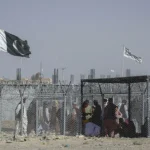On the night of 21st April, a lethal bomb blast gripped Quetta. The blast occurred in the parking zone of a hotel. Reportedly, the Chinese ambassador was staying in that hotel. Fortunately, all hotel guests remained unharmed. Only casualties occurred in the parking lot with reportedly five people killed. The Pakistani Taliban (TTP) claimed responsibility for this attack. The renewed attacks of this militant group are becoming a part of a greater game. Alarmingly, this is unlike any of its previous attacks. A game that has underpinnings of hegemonic geopolitics. The last few years have witnessed a pattern of attacks that target Sino-Pak joint endeavours particularly. This attack forms congruency with other measures by different state and non-state actors for jeopardizing Chinese economic cooperation with Pakistan, CPEC.
CPEC: A Geo-Economic Scheme for South Asia
The China Pakistan Economic Corridor (CPEC) underpins China’s scheme to build on its political and economic dominance in the region. “One Belt One Road (OBOR)” is a huge portfolio. CPEC is the Pakistani component of the greater OBOR ambition. With regard to the investment point of view on the CPEC, Chinese investment is over USD 46 billion, considered to be one of the largest investments since 1947. This investment in various sectors including seaport, energy projects, infrastructure development, and industrial uplifting is being called pivotal for Pakistan’s development as it injects much-needed capital into a country marred by violence. This was majorly due to the neighbourhood Pakistan had inherited, Afghanistan to the West, and an assertive India in the East. CPEC has been rightly titled a ‘game-changer’ in terms of its promise to transform regional connectivity through economic interdependence.
Entailing Threat Matrix
Whenever one hears the word ‘threat matrix’, the thought of some giant monster using its tentacles to devour its prey comes into your mind. Of course, this is a simple notion to a complex web of facts that cannot be described in a single macro thesis. Threats can of multiple nature and vary in their degrees as well. In order to do a threat assessment, one has to highlight a referent object that is threatened. After this, empiricism is used for threat analysis. This also includes hypothesizing any future threats.
Nature of Threats to CPEC
Enough literature is available on the significance of the CPEC projects. The media, political and academic circles often discuss its prospects.
The threats to CPEC emanate from internal issues such as the Baloch insurgency to administrative lapses and political upheavals in the region. External dimensions have been more clearer and befuddling at the same time. In the contemporary era, states utilize an array of arsenal which is non-traditional in nature. By traditional, we understood that states would use military and high politics openly to undermine a challenger. But today, even superpowers used hybrid mechanisms to unleash violence against their adversaries. And the line between internal and external threats becomes murky as both intertwine in their methods and intents.
Resurging TTP
After years of almost irrelevance, Tehreek-e-Taliban Pakistan (TTP) appears to be regrouping and reviving itself, as a movement of the Afghan-based Pakistani tribal militants. The group that came into being in 2005 was efficiently neutralized by Pakistani forces through successive military operations in the tribal areas. In 2014, TTP leadership stepped away from the Mehsud tribe, the biggest faction in the backbone of the party, for the first time with Mullah Fazlullah’s appointment. The frequency of attacks drastically declined as Pakistan conducted intelligence-based operations. This renewed insurgence came when Noor Wali Mehsud became the group’s leader after Fazlullah’s death in a drone strike.
Pakistan’s efforts have been successful in halting terror attacks on its soil. However, with a leader like Noor Wali Mehsud who intends to reorganize the group on not just the Jihadi line but a Pashtun-centric one, this poses a threat to CPEC. Here the congruency of groups like the Pashtun Tahafuz Movement (PTM) and TTP gets less murky. PTM openly instigates anti-army sentiments in the tribal regions that were freed from TTP. Resultantly, the PTM criticizes the Pak army’s actions against the TTP. The PTM is parroting a similar narrative as TTP. This left-right wing cooperation against Sino-Pak interests deems a possible threat.
What solidifies this threat is that during recent protests by the banned Tehrik-e-Labbaik (TLP), the TTP issued a statement to show its support. This is ironic as TTP is a Deobandi Jihadi group while TLP has Barelvi inclinations. Ideologically, the TTP would declare the latter a heretic. But when it came to subversive activities and challenging the writ of the state, TTP changed its posture.
Indian Ploy to Harm CPEC Through Pakistan’s Western Flank
CPEC’s western route passes through Balochistan. The region has witnessed internal hostilities due to groups armed by foreign proxies. Their intent is not just destabilizing Pakistan. They had a newfound romance to target Chinese installations to discourage them from completing their BRI objectives. In March 2016, a serving Indian naval officer Kulbushan Jadhav, who was operating with Research and Analysis Wing (RAW), was caught in Balochistan. He confessed to having partaken in activities aimed at CPEC projects especially. For this purpose, Indian agencies harpooned Baloch extremist groups. Jadhav admitted to having come through Iran to sabotage CPEC activities.
Not only that, Aslam Achoo, the mastermind of the attack on the Chinese consulate in 2018 was even reported being treated at a hospital in New Delhi.
Afghanistan being a hotbed of conflicts became a breeding site of multiple militant networks. These had alleged clandestine support of not only India or the Kabul regime, but the USA as well. Former Afghan President Hamid Karzai, who came to power by American support, claimed that the USA was allowing Daesh to flourish in Afghanistan. This claim came from a former US ally who was in cahoots with Americans during Operation Enduring Freedom.
ISKP: A Distress for CPEC
Afghanistan had remained a nursery for terror outfits but the last few years witnessed the rise of the lethal Islamic State of Iraq and the Levant – Khorasan Province ( ISKP). The ISKP is an existential threat for literally any aspiration for regional peace. The radical outfit coordinates with warring groups in neighbouring states. These include The East Turkestan Islamic Movement (ETIM) in Xinjiang, TTP in Pakistan, the Islamic Movement of Uzbekistan (IMU) in Uzbekistan, and Jundullah in Iran. What is even more interesting is that unlike other Al Qaeda outfits ISKP has bad blood with the Afghan Taliban. Taliban leadership has outrightly rejected any space to ISKP and even fought with the militant group in Afghanistan.
ISKP is an emerging threat to Chinese plans as this chapter of Daesh had debatable origins. Its ambition to destabilize not only Afghanistan but the whole region by ensuing violence would lead to more securitization. This securitization would keep any geo-economic endeavours on the backhand.
American Realignment Against the Chinese Dragon
It is no hidden fact that after the cold war, China has emerged as the alpha challenger to American global hegemony. China has shifted a unipolar world order to a multipolar one. The officials in Washington consider CPEC a Chinese ambition to increase regional dominance. Chinese designs are economic. The USA dispenses the hypothesis that China is doing the same as the Soviet Union did in the cold war. Meaning that China is aligning countries in its spheres of influence.
The USA in recent years has honed its military and diplomatic muscles. It is being done in congruency with India. India, which currently has its frictions with neighbouring China. It is particularly notable when in 2017, the decision to resurrect the Quadrilateral Security Dialogue, also known as the Quad, was taken. ‘The Spirit of the Quad,’ which Quad members deliberated as ‘a common vision for an Open and Free Indo Pacific’ and a ‘regulatory maritime order in the East and Southern seas of China.
Later on, the US Pacific Command changed its name to US Indo-Pacific Command, in May 2018. These postures signify that the US intends to contain China in all realms, with an increasing focus on military ones. This is where Indo-US interests intertwine. They would prefer to curtail CPEC which would allow Chinese access to the Indian ocean, something India fears as an entanglement.
So India would put good use of its overt and covert arsenal for subversive activities in Pakistan. India will use Afghan soil as a launching pad. A stable and strong Afghanistan would curtail any design of misusing its territory to harm the sovereignty of a neighbouring state.
Tranquillizing the CPEC Threat Matrix
Subsequently, with China’s ambitious plans in Indo-US crosshairs, it is evident that coming years would witness more complexities in regions where China intends to invest. As for CPEC, the threats have been evident and the strategic Sino-Pak relations have traversed these nefarious designs. Attacks such as those in Quetta yesterday try to depict Pakistan as an unstable site for investment. These attacks do not intent material harm, rather an ideational one -To make China reconsider its CPEC policy. It puts a burden on Sino-Pak cooperation. The states must cooperate vehemently in intelligence sharing and form a stronger congruency for regional connectivity. This would seminally involve the inclusion of Afghanistan into CPEC projects. This inclusion would singlehandedly curtail subversive designs of aggressive regional states against China.
Concluding, the plethora of internal and external threats which include sub nationalists movements, radical terror syndicates, and state actors, have to be identified beforehand. So these spoilers would not be able to obstruct Pak-Chine ties with respect to CPEC.





